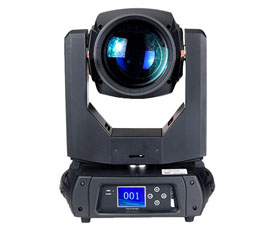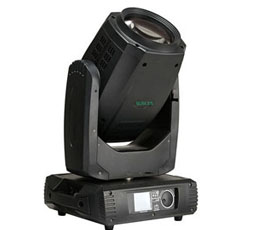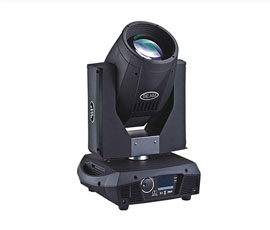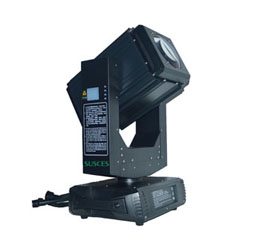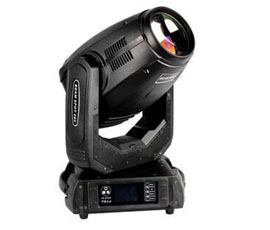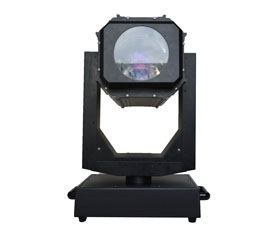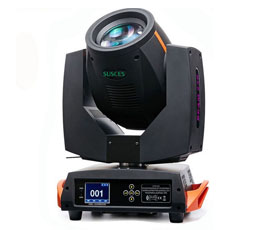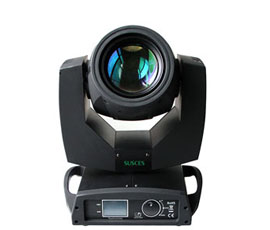
On the color of LED light source and evaluation methods
Date:2016/6/3
source:stagelight
1 CRI If CRI is applied to RGB combination LEDs, it may be misleading. Because of the lack of a large amount of yellow spectrum, the RGB combination LEDs lack a yellow color. The peak of the RGB combination spectrum is narrow and the interval between the peaks is large, and the spectral distribution is poor in the color of the outer saturation color. CRI calculation of the standard color model used for the unsaturated color, for the measurement of continuous and wide band of light color is better; for LED and other saturated color light source, color evaluation accuracy will have some error. Figure 2, choose 12 standard color card compared with the standard light source, subject LED light source A (Ra = 80) on the right side of the four saturated color performance as testLED光源B(Ra =67)。
CRI calculation of the standard color model used for the unsaturated color, for the measurement of continuous and wide band of light color is better; for LED and other saturated color light source, color evaluation accuracy will have some error. Figure 2, choose 12 standard color card compared with the standard light source, subject LED light source A (Ra = 80) on the right side of the four saturated color performance as testLED光源B(Ra =67)。 2 color index CQS based on CRI in the assessment of LED light source, there is uneven color space, the standard color samples less saturation is too low and so on. The National Institute of Standards and Technology gives a new method, Color Quality Scale (CQS), to evaluate the color quality of new white light sources such as LEDs. Similar to CRI, CQS also uses color method. Through the measured light source and the reference light source, with the same standard color samples, calculate the color difference between them. Unlike the unsaturated color of CRI, CQS chooses 15 saturated colors, which are distributed throughout the visible spectrum. As shown in Figure 3, the color index CQS test color of the color palette from red to purple constitutes a nearly continuously changing partial saturation color. The data required to calculate the CQS value can be derived from the spectral properties of the light source and the color of the color samples. The initial calculation of the color shift of the 15 color samples is consistent with that of the CRThe calculation is similar, but the CQS value is the rms value of the 15 data, ie,I
2 color index CQS based on CRI in the assessment of LED light source, there is uneven color space, the standard color samples less saturation is too low and so on. The National Institute of Standards and Technology gives a new method, Color Quality Scale (CQS), to evaluate the color quality of new white light sources such as LEDs. Similar to CRI, CQS also uses color method. Through the measured light source and the reference light source, with the same standard color samples, calculate the color difference between them. Unlike the unsaturated color of CRI, CQS chooses 15 saturated colors, which are distributed throughout the visible spectrum. As shown in Figure 3, the color index CQS test color of the color palette from red to purple constitutes a nearly continuously changing partial saturation color. The data required to calculate the CQS value can be derived from the spectral properties of the light source and the color of the color samples. The initial calculation of the color shift of the 15 color samples is consistent with that of the CRThe calculation is similar, but the CQS value is the rms value of the 15 data, ie,I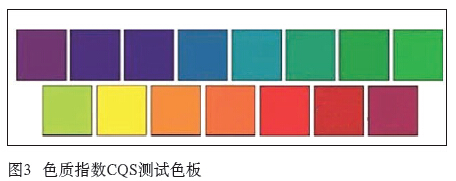
 Where: Qa - Qi the root mean value of the 15 data; Qi - measured light source and the reference light source with the same set of standard color samples of the color, i take 1 ~ 15. Compared to the calculation of CRI (Ra), the calculation method of CQS (Qa) is enhanced on the weight of chromatic aberration, so that even if there is some color difference between color samples, it will not have a significant effect on the final result. CQS takes into account the full color of color and color of LED white light, but it is necessary to carry out further visual experiment and improvement in accurately assessing the fidelity and preference of color. 3 TV light consistency index TLCI European Broadcasting Union (EBU) in November 2011 released another for the studio lighting test standards - Television Lighting Consistency Index (Television Lighting ConsistencyIndex, abbreviated as TLCI) , It takes full account of the requirements of the TV camera for the lighting environment. TLCI is a spectral radiometer for a light source of the spectral energy distribution measured and calculated. The TLCI standard test is somewhat similar to the CRI and is determined by a comparison of the color contrast icons. The test block has 24 blocks, as shown in Figure 5, the left side of the test block shows the standard camera by the standard reduction and display on the standard display of the reference light source and the measured light source, the right side of the table provided12 color blocks Adjust the brightness, chroma and tone required for the indication. The lower right icon shows the spectral intensity distribution of the measured light source (dark black curve) and the reference light source (light curve)Contrast map。
Where: Qa - Qi the root mean value of the 15 data; Qi - measured light source and the reference light source with the same set of standard color samples of the color, i take 1 ~ 15. Compared to the calculation of CRI (Ra), the calculation method of CQS (Qa) is enhanced on the weight of chromatic aberration, so that even if there is some color difference between color samples, it will not have a significant effect on the final result. CQS takes into account the full color of color and color of LED white light, but it is necessary to carry out further visual experiment and improvement in accurately assessing the fidelity and preference of color. 3 TV light consistency index TLCI European Broadcasting Union (EBU) in November 2011 released another for the studio lighting test standards - Television Lighting Consistency Index (Television Lighting ConsistencyIndex, abbreviated as TLCI) , It takes full account of the requirements of the TV camera for the lighting environment. TLCI is a spectral radiometer for a light source of the spectral energy distribution measured and calculated. The TLCI standard test is somewhat similar to the CRI and is determined by a comparison of the color contrast icons. The test block has 24 blocks, as shown in Figure 5, the left side of the test block shows the standard camera by the standard reduction and display on the standard display of the reference light source and the measured light source, the right side of the table provided12 color blocks Adjust the brightness, chroma and tone required for the indication. The lower right icon shows the spectral intensity distribution of the measured light source (dark black curve) and the reference light source (light curve)Contrast map。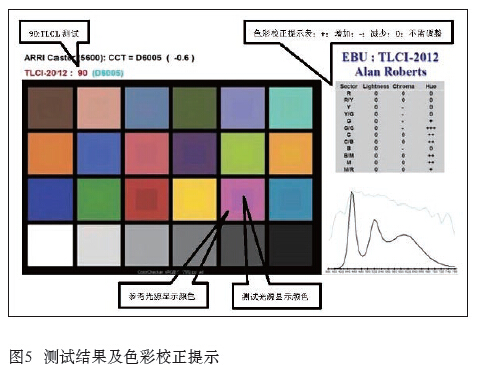 Excerpt from "Performing Arts" 2016 No. 5 Wang Li "light color evaluation criteria and high-definition television picture quality relationship"
Excerpt from "Performing Arts" 2016 No. 5 Wang Li "light color evaluation criteria and high-definition television picture quality relationship"
 CRI calculation of the standard color model used for the unsaturated color, for the measurement of continuous and wide band of light color is better; for LED and other saturated color light source, color evaluation accuracy will have some error. Figure 2, choose 12 standard color card compared with the standard light source, subject LED light source A (Ra = 80) on the right side of the four saturated color performance as testLED光源B(Ra =67)。
CRI calculation of the standard color model used for the unsaturated color, for the measurement of continuous and wide band of light color is better; for LED and other saturated color light source, color evaluation accuracy will have some error. Figure 2, choose 12 standard color card compared with the standard light source, subject LED light source A (Ra = 80) on the right side of the four saturated color performance as testLED光源B(Ra =67)。 2 color index CQS based on CRI in the assessment of LED light source, there is uneven color space, the standard color samples less saturation is too low and so on. The National Institute of Standards and Technology gives a new method, Color Quality Scale (CQS), to evaluate the color quality of new white light sources such as LEDs. Similar to CRI, CQS also uses color method. Through the measured light source and the reference light source, with the same standard color samples, calculate the color difference between them. Unlike the unsaturated color of CRI, CQS chooses 15 saturated colors, which are distributed throughout the visible spectrum. As shown in Figure 3, the color index CQS test color of the color palette from red to purple constitutes a nearly continuously changing partial saturation color. The data required to calculate the CQS value can be derived from the spectral properties of the light source and the color of the color samples. The initial calculation of the color shift of the 15 color samples is consistent with that of the CRThe calculation is similar, but the CQS value is the rms value of the 15 data, ie,I
2 color index CQS based on CRI in the assessment of LED light source, there is uneven color space, the standard color samples less saturation is too low and so on. The National Institute of Standards and Technology gives a new method, Color Quality Scale (CQS), to evaluate the color quality of new white light sources such as LEDs. Similar to CRI, CQS also uses color method. Through the measured light source and the reference light source, with the same standard color samples, calculate the color difference between them. Unlike the unsaturated color of CRI, CQS chooses 15 saturated colors, which are distributed throughout the visible spectrum. As shown in Figure 3, the color index CQS test color of the color palette from red to purple constitutes a nearly continuously changing partial saturation color. The data required to calculate the CQS value can be derived from the spectral properties of the light source and the color of the color samples. The initial calculation of the color shift of the 15 color samples is consistent with that of the CRThe calculation is similar, but the CQS value is the rms value of the 15 data, ie,I
 Where: Qa - Qi the root mean value of the 15 data; Qi - measured light source and the reference light source with the same set of standard color samples of the color, i take 1 ~ 15. Compared to the calculation of CRI (Ra), the calculation method of CQS (Qa) is enhanced on the weight of chromatic aberration, so that even if there is some color difference between color samples, it will not have a significant effect on the final result. CQS takes into account the full color of color and color of LED white light, but it is necessary to carry out further visual experiment and improvement in accurately assessing the fidelity and preference of color. 3 TV light consistency index TLCI European Broadcasting Union (EBU) in November 2011 released another for the studio lighting test standards - Television Lighting Consistency Index (Television Lighting ConsistencyIndex, abbreviated as TLCI) , It takes full account of the requirements of the TV camera for the lighting environment. TLCI is a spectral radiometer for a light source of the spectral energy distribution measured and calculated. The TLCI standard test is somewhat similar to the CRI and is determined by a comparison of the color contrast icons. The test block has 24 blocks, as shown in Figure 5, the left side of the test block shows the standard camera by the standard reduction and display on the standard display of the reference light source and the measured light source, the right side of the table provided12 color blocks Adjust the brightness, chroma and tone required for the indication. The lower right icon shows the spectral intensity distribution of the measured light source (dark black curve) and the reference light source (light curve)Contrast map。
Where: Qa - Qi the root mean value of the 15 data; Qi - measured light source and the reference light source with the same set of standard color samples of the color, i take 1 ~ 15. Compared to the calculation of CRI (Ra), the calculation method of CQS (Qa) is enhanced on the weight of chromatic aberration, so that even if there is some color difference between color samples, it will not have a significant effect on the final result. CQS takes into account the full color of color and color of LED white light, but it is necessary to carry out further visual experiment and improvement in accurately assessing the fidelity and preference of color. 3 TV light consistency index TLCI European Broadcasting Union (EBU) in November 2011 released another for the studio lighting test standards - Television Lighting Consistency Index (Television Lighting ConsistencyIndex, abbreviated as TLCI) , It takes full account of the requirements of the TV camera for the lighting environment. TLCI is a spectral radiometer for a light source of the spectral energy distribution measured and calculated. The TLCI standard test is somewhat similar to the CRI and is determined by a comparison of the color contrast icons. The test block has 24 blocks, as shown in Figure 5, the left side of the test block shows the standard camera by the standard reduction and display on the standard display of the reference light source and the measured light source, the right side of the table provided12 color blocks Adjust the brightness, chroma and tone required for the indication. The lower right icon shows the spectral intensity distribution of the measured light source (dark black curve) and the reference light source (light curve)Contrast map。 Excerpt from "Performing Arts" 2016 No. 5 Wang Li "light color evaluation criteria and high-definition television picture quality relationship"
Excerpt from "Performing Arts" 2016 No. 5 Wang Li "light color evaluation criteria and high-definition television picture quality relationship"
Reminder: This article come from the network, if this article infringed your copyright, please contact us to amend.
Related articles TAG:LED Light Source
